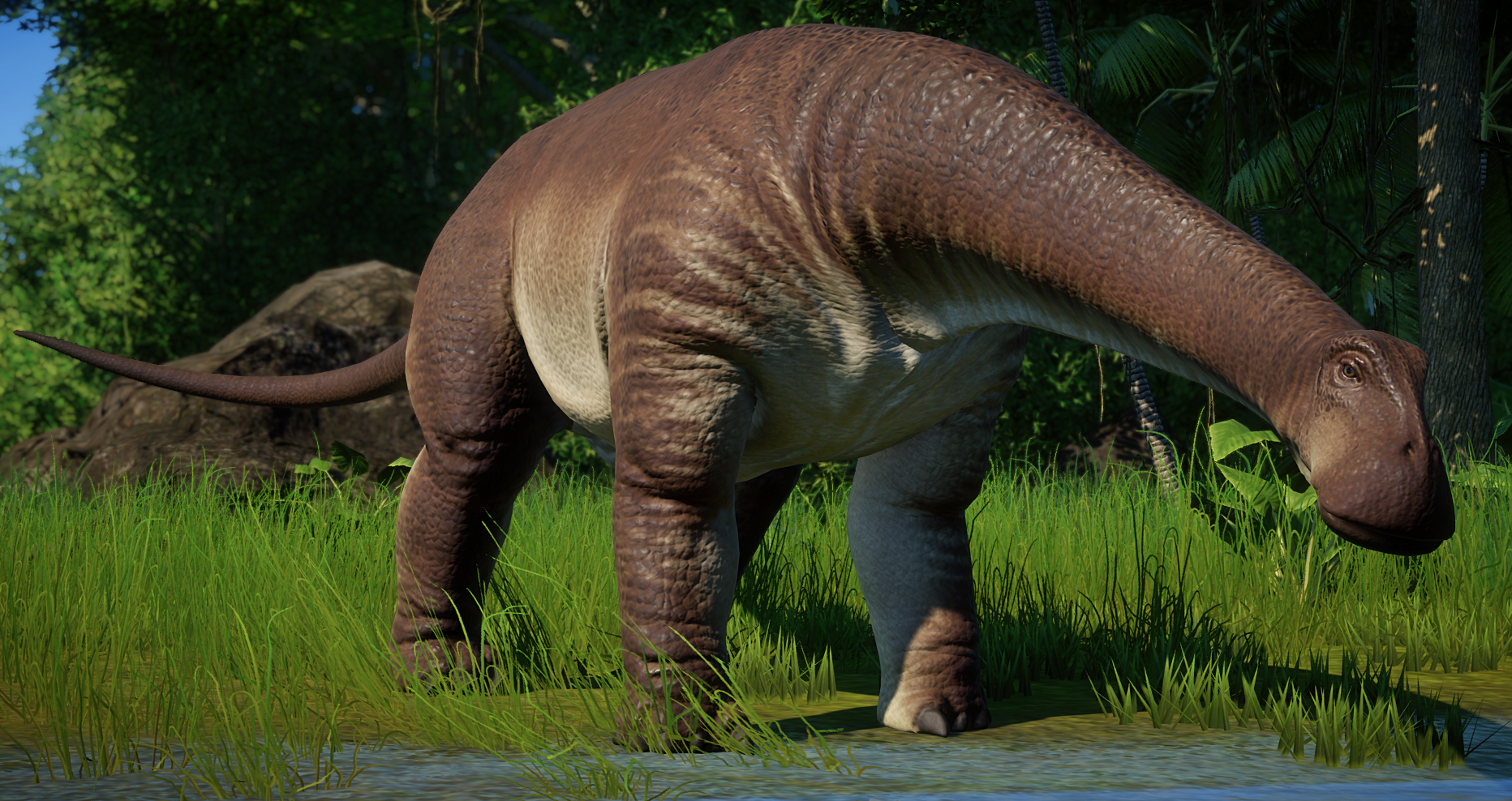Did you know that amidst the titans of the dinosaur age, there roamed a creature unlike any other, a gentle giant with a truly remarkable adaptation? The Nigersaurus, a sauropod dinosaur from the Cretaceous period, boasted an extraordinary dental arrangement, a testament to the diverse and often bizarre forms life took millions of years ago.
Discovered in the Elrhaz Formation of Niger, in an area known as Gadoufaoua, the Nigersaurus offers a fascinating glimpse into a bygone era. This herbivore, a member of the rebbachisaurid family, shared its habitat with a vibrant assortment of other creatures, including various dinosaurs, crocodilians, flying reptiles, fish, turtles, and snakes. Imagine a world teeming with life, where the Nigersaurus, with its peculiar feeding habits, carved a unique niche for itself.
To understand the Nigersaurus better, let's look at the details:
- Mothers Warmth Chapter 3 Release Date Updates
- Discover Aha Movierulz Where To Watch Tamil Telugu Movies
| Attribute | Details |
|---|---|
| Name | Nigersaurus |
| Pronunciation | (\/ n iː ˈ ʒ ɛər s ɔː r ə s, ˈ n aɪ dʒ ər s ɔː r ə s \/) |
| Classification | Rebbachisaurid Sauropod Dinosaur |
| Period Lived | Middle Cretaceous Period (115 to 105 million years ago) |
| Location of Discovery | Elrhaz Formation, Gadoufaoua, Niger |
| Size | Approximately 30 feet (9 meters) in length |
| Weight | Between 1.9 and 4 tons |
| Distinctive Feature | Approximately 500 slender teeth arranged in tightly packed rows. |
| Teeth Replacement | Replaced its teeth every 14 days |
| Etymology | Named after the country of Niger ("Niger" + "saurus" (reptile)) |
| Recognized | 2000 |
| First Discovered | Republic of Niger |
| Noted for | Its distinctive skull and jaw. |
| Other details | Was a small sauropod compared to relatives like brachiosaurus and diplodocus |
| Reference Website | Wikipedia - Nigersaurus |
The Nigersaurus, though a sauropod, stood apart from its gigantic cousins. It was relatively small, measuring around 30 feet (9 meters) in length and weighing between 1.9 and 4 tons, comparable in size to a modern African elephant. This highlights the incredible diversity within the sauropod lineage.
Its name, "Nigersaurus," pays homage to the Republic of Niger, where its fossils were first unearthed. The term itself is a combination of "Niger," the country's name, and "saurus," meaning "reptile." This naming convention, common in paleontology, reflects the location of discovery and the nature of the creature.
The most striking characteristic of the Nigersaurus was undoubtedly its mouth. Unlike the peg-like teeth of many other sauropods, the Nigersaurus boasted approximately 500 slender teeth arranged in neat rows along its jaws. This unique dental battery suggests a specialized feeding strategy, perhaps suited to grazing on low-lying vegetation. The teeth were constantly replaced, every 14 days, showcasing a remarkable rate of growth and wear.
- Jazzon Content Patreon Stats Nsfw Pizza Delivery Videos
- Kannada Movies 2025 Stream Download Legally A Safe Guide
While the initial fossil discoveries were made in the 1950s by a French expedition, it wasn't until 1976 that this unique genus was formally recognized by paleontologist Phillip Taquet. In 2005, further research, led by Paul Sereno, provided the first detailed description of the fragile cranium (skull) of this extraordinary sauropod. The detailed study of the skull revealed the full extent of the Nigersaurus's remarkable dentition and its specialized feeding adaptations.
Nigersaurus belonged to the rebbachisaurid group, a family of sauropod dinosaurs. These dinosaurs were prevalent during the Early Cretaceous period, particularly in Africa. Nigersaurus, specifically, roamed the landscapes of what is now Niger during the late Aptian age of the Early Cretaceous period.
The environment where the Nigersaurus lived was rich and diverse, featuring a menagerie of other dinosaur species, crocodilians, and flying reptiles, not to mention various fish, turtles, and snakes. The presence of these animals gives us a more detailed understanding of the ecosystem and the role the Nigersaurus played within it.
The creature's unique skull and jaw structure are unlike anything else found, not only in other dinosaurs but also in any known animal group. Its most notable feature is a jaw that resembles the intake of a vacuum cleaner, which is a distinctive feature in the hadrosauridae.
The Nigersaurus offers invaluable insights into the evolution of sauropods and the varied ways dinosaurs adapted to their environments. Further research into this fascinating creature will undoubtedly continue to provide more details about its life and the world it inhabited.
- Unveiling Melanie Cades Net Worth In 2024 Insights Growth
- Lilith Berry Real Person Or Ai Unveiling The Truth
:max_bytes(150000):strip_icc()/nigersaurusWC-56a252f83df78cf772746d62.jpg)

